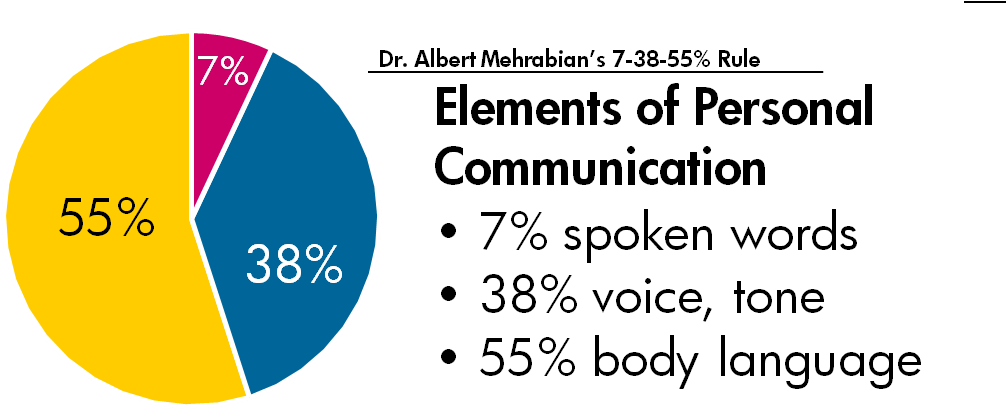Let's get started on efficient communication as the year draws to a close. This month, we pay attention to our communication channels and how others perceive messages.
When communicating, especially when writing, have you ever felt misunderstood? According to research by Forbes, we communicate 93% of the time through our tone, pace, and gestures. That means just 7% of our communication is spoken verbally. The next time you send an email, text message, or Webex, ensure your message is clear and concise. Remember, only 7% of your communication is getting through – the other 93% is up for interpretation.

Consider these tips for sending messages virtually:
1.
Am I using acronyms, jargon, or idioms? Using any of these in your communication can distort or even inhibit the message from getting through. If you have to use acronyms, spell the word or phrase out first and then proceed to use it moving forward. Try your best to avoid jargon and idioms – they clutter the message.
2.
Am I making any assumptions? Never assume the other person knows what you mean. This saves everyone time in the long run, so they do not have to send follow-up correspondence asking additional questions.
3.
Am I communicating in the other person's style? For example, if you prefer to get right to the point and love a list of bullet points, you may find yourself sending emails or messages in the same manner. What happens when the person receiving your message prefers communication to have a lot of detail? You may come off as direct or blunt when you did not mean to. Consider asking your peers about their communication preferences to avoid any misunderstandings.
As technology continues to become more involved in our day-to-day, it is easy to let communication deter. The simple steps outlined above will help you avoid many common virtual miscommunications.
While participation is optional, our goal is to provide just the right amount of education so supervisors can meet their LDR goals, and all team members can meet their individual educational goals.
 Loading...
Loading...
 Consider these tips for sending messages virtually:
1. Am I using acronyms, jargon, or idioms? Using any of these in your communication can distort or even inhibit the message from getting through. If you have to use acronyms, spell the word or phrase out first and then proceed to use it moving forward. Try your best to avoid jargon and idioms – they clutter the message.
2. Am I making any assumptions? Never assume the other person knows what you mean. This saves everyone time in the long run, so they do not have to send follow-up correspondence asking additional questions.
3. Am I communicating in the other person's style? For example, if you prefer to get right to the point and love a list of bullet points, you may find yourself sending emails or messages in the same manner. What happens when the person receiving your message prefers communication to have a lot of detail? You may come off as direct or blunt when you did not mean to. Consider asking your peers about their communication preferences to avoid any misunderstandings.
As technology continues to become more involved in our day-to-day, it is easy to let communication deter. The simple steps outlined above will help you avoid many common virtual miscommunications.
While participation is optional, our goal is to provide just the right amount of education so supervisors can meet their LDR goals, and all team members can meet their individual educational goals.
Consider these tips for sending messages virtually:
1. Am I using acronyms, jargon, or idioms? Using any of these in your communication can distort or even inhibit the message from getting through. If you have to use acronyms, spell the word or phrase out first and then proceed to use it moving forward. Try your best to avoid jargon and idioms – they clutter the message.
2. Am I making any assumptions? Never assume the other person knows what you mean. This saves everyone time in the long run, so they do not have to send follow-up correspondence asking additional questions.
3. Am I communicating in the other person's style? For example, if you prefer to get right to the point and love a list of bullet points, you may find yourself sending emails or messages in the same manner. What happens when the person receiving your message prefers communication to have a lot of detail? You may come off as direct or blunt when you did not mean to. Consider asking your peers about their communication preferences to avoid any misunderstandings.
As technology continues to become more involved in our day-to-day, it is easy to let communication deter. The simple steps outlined above will help you avoid many common virtual miscommunications.
While participation is optional, our goal is to provide just the right amount of education so supervisors can meet their LDR goals, and all team members can meet their individual educational goals.